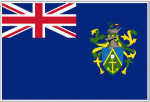- 1 reply
- 3,289 views
- Add Reply
- 0 replies
- 2,285 views
- Add Reply
- 3 replies
- 13,502 views
- Add Reply
- 2 replies
- 3,310 views
- Add Reply
- 1 reply
- 1,320 views
- Add Reply
How to change pixel size in Idrisi?
By eddieatr,
Hi guys,
Anybody using Idrisi Taiga?
I have a raster columns x rows = 360 x 200
Pixel resolution is = 1 x 0.85929649 degree
How can I change the raster to,
columns and rows = 360 x 180
Pixel resolution = 1 x 1 degree
Thanks in advance.
Cheers
Classification of RS data with Weka

By hariasa,
Hi all,
I was just wondering if someone has used WEKA (or RapidMiner) to classify RS data. Searching on the internet revealed some papers about people using it, but with only for very small areas.
Does anyone have experience with large amounts of data to classify with either of these programs? Since it seems kind of impossible to convert a large multi-band raster to the silly CSV/ARFF format WEKA uses.
Thanks
Ratio in classification object

By HTC,
Hello everybody!
I ask everybody how to classify object by Ratio: "what does these Ratio use in classify image in remote sesing?"
I only know NDVI, SAVI...: (Water NDVI<0, Vegetation: 0.2<NDVI<........ )What ratio else?
Add spatial database connection doesn't appear
By bobo_dos,
I want connect ArcGIS Desktop to ArcSDE, but I don't have the option "Add spatial database connection" in Database connections of catalog tab.
Do you know why?
I'm using ArcGIS 10.1
Does it work?
By bobo_dos,
I found this link:
http://www.esoft.ws/applications/3186451-arcgis-desktop-v101-arcsde-101-arcgis-for-server-101-arcreader-101-maps-and-data-101.html
But I downloaded Gersion files before and I couldn't unpack them. Did you try it?
-
Forum Statistics
8.7k
Total Topics43.4k
Total Posts






